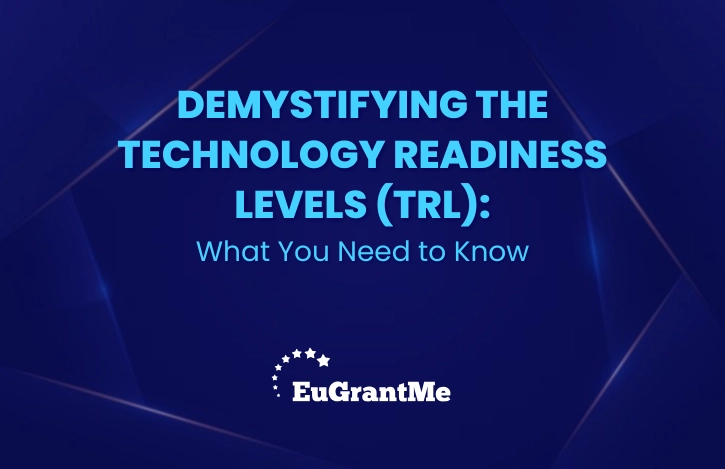Technology Readiness Levels (TRL) provide a structured framework to assess the maturity of a technology. Originally developed by NASA, they are now widely used in research, innovation, and funding programmes. Businesses, universities, and policymakers rely on TRL to evaluate technological progress and guide investment decisions.
Understanding Technology Readiness Levels helps organisations plan development stages effectively. From initial research to commercial deployment, TRL ensures technologies meet necessary requirements before large-scale implementation. Proper assessment reduces risks and increases the chances of successful market adoption.
The Purpose of Technology Readiness Levels
TRL categorises technological development into distinct stages. It enables researchers and investors to track progress and identify potential gaps. The framework supports decision-making by ensuring that technologies align with regulatory, financial, and technical requirements.
Businesses use TRL to communicate innovation potential to stakeholders. It helps establish credibility with funding bodies, industry partners, and government agencies. Aligning development with TRL benchmarks also ensures smoother transitions between research, prototyping, and production.
Early-Stage Development and Research
The initial TRL stages focus on fundamental research and concept validation. Scientists explore theoretical principles and examine potential applications. Basic experiments provide early insights into feasibility and future development paths.
At this stage, innovation exists mainly in research papers, laboratory tests, or theoretical discussions. Technologies require further validation before moving into applied research and prototyping. Progress depends on scientific advancements and proof-of-concept demonstrations.
Moving from Concept to Prototype
Transitioning from theoretical research to a functional prototype is a critical step. Engineers and researchers refine designs and test key components. Experimental setups validate performance under controlled conditions, reducing uncertainties.
Early prototypes often undergo multiple iterations. Refinements improve reliability, efficiency, and safety. The goal is to develop a working model that demonstrates the core functionality of the technology before large-scale testing.
Demonstration and Validation in Real Environments
As technology advances, real-world validation becomes essential. Testing in relevant environments confirms performance, reliability, and scalability. Industries rely on field trials and pilot projects to assess viability.
Validating technology under real conditions highlights potential operational challenges. Engineers refine designs, improve materials, and optimise integration with existing systems. This phase ensures readiness for industrial adoption and regulatory approval.
Scaling Up for Commercial Deployment
Scaling up involves transitioning from prototypes to full-scale production. Manufacturers optimise processes to ensure cost-effectiveness and quality control. Supply chains and production facilities must align with market demands.
Businesses assess risks associated with large-scale implementation. Financial planning, regulatory compliance, and technical adjustments are essential. Successful scaling leads to commercial availability, with widespread industry adoption following.
The Role of TRL in Funding and Investment
Investors and funding agencies use TRL to assess project feasibility. Early-stage technologies may receive research grants, while advanced solutions attract venture capital. Clear TRL definitions help secure financial support.
Governments and industry stakeholders prioritise funding based on readiness levels. Higher TRL technologies demonstrate lower risks, making them attractive for commercialisation. Strategic investment accelerates innovation and market entry.
TRL in European Research and Innovation
European funding programmes, such as Horizon Europe, incorporate TRL to assess project eligibility. Grant applications often require technologies to reach specific readiness levels. Aligning proposals with TRL expectations increases approval chances.
Regulatory bodies also consider TRL when evaluating new technologies. Compliance with safety, environmental, and operational standards influences development timelines. Understanding TRL requirements helps businesses navigate European innovation frameworks effectively.
Challenges in Assessing Technology Readiness
Determining the correct TRL can be complex. Some technologies evolve through non-linear pathways, making classification difficult. Overestimating readiness may lead to premature market entry, while underestimating it can slow innovation.
Standardised assessment methods improve TRL accuracy. Independent evaluations, peer reviews, and expert consultations ensure reliable classification. Consistency in TRL application benefits investors, researchers, and industry leaders.
The Future of Technology Readiness Levels
TRL will continue shaping innovation strategies across industries. As emerging technologies advance, refined assessment models may enhance accuracy. Expanding TRL applications to new sectors will improve global research and development efforts.
A clear understanding of Technology Readiness Levels helps businesses and researchers plan development effectively. By following structured progression, organisations can reduce risks, secure funding, and accelerate market entry.
At EuGrantMe, we are passionate about fostering innovation and empowering ambitious minds to flourish. Our mission revolves around providing top-notch grant writing services for the EIC Accelerator and Horizon grants in Europe. We enable our customers to unlock the full potential of their ground-breaking ideas.
Do you have a project to turn into reality?
Contact us!


